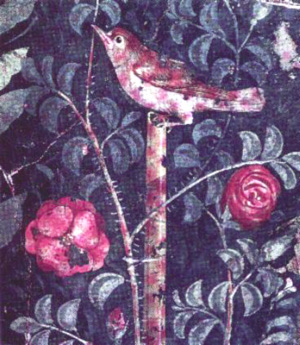
Nightingale
A lifetime
of anxieties for It, devout this miserable heart
A lifetime
has passed us by, while It was with others [1]
O! Gales
scatter the dust of Its steps afar
Since that
is the guide for the people of vision alight
When
nightingale and blossom found Your fragrance in the Gardens [2]
One
screams aloud and the other ripping its gown apart
Your arrow
easily lands on the wounded heart
That pain
shall also pass, since all things are meant to pass us by
Not even
talking about Your pain, the bosoms ablaze
Unobservable
Your mighty weight, bearing heavy on our eyes [3]
If You
yearn to spill the blood of Kamaal
We are on
Your blade and striking, that aimed at us
The life
has come to an end, alas all tales about to end
The path
for this voyage has no corners or verge [4]
[1] Kamaal is in sorrow, no matter how
much he devotes himself to the Beloved, he finds It with others and
himself left alone. That is an expression in Farsi language of immense
love and affection for someone, you say something painful to render the
subservience and humility. It does not mean that the Creator spent
times with others and ignored Kamaal. It expresses a deep desire to
have the Creator to be closer.
[2] Nightingale and flowers used a lot
in Farsi poetry. However from poet to poet they mean something
different. Kamaal’s paradigm here is that of someone sobbing and
screaming for their beloved i.e. the nightingale singing and ripping
their gowns because of immense pain. The ripping is the breaking and
tearing the sheath of a bud for a blossom to bloom. This comes from
Koranic expressions of Allah’s knowledge Fussilat [41:47] :
[3] Mighty weight from Koran
Al-muzzammil [73:5] :
[4] This is a reoccurring imagery quite
common amongst the Sufi poets. Shore-less ocean is the description of
the voyage for the traveler (Salek). This is again another
contradictory ambiguity means to fuel the passion in the heart of a
Salek to know that this voyage towards the Creator is no ordinary
travel.
Background: Nightingale and
rose from ancient Roman wall paintings.
© 2003-2002,
By Dara Shayda



